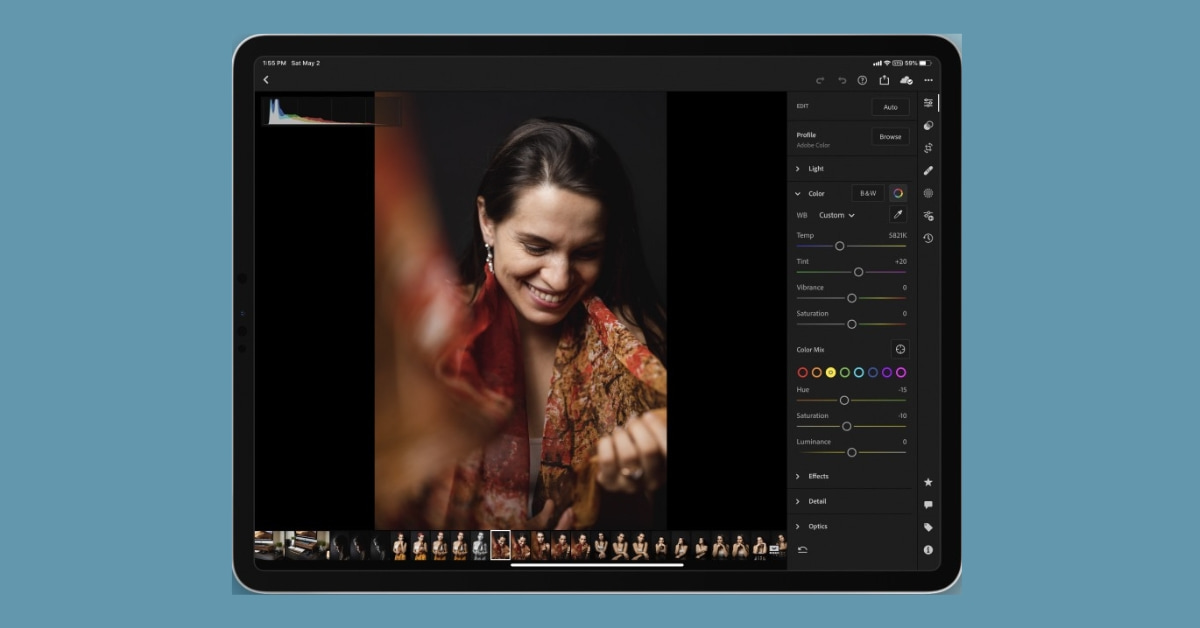The evolution of technology has empowered photographers to leverage the capabilities of devices like the iPad to enhance their photography workflow. An efficient iPad photography workflow not only simplifies the process but also elevates the creative potential, offering a portable and versatile platform for editing, organizing, and sharing photos. Let’s explore the significance, key aspects, steps, considerations, and FAQs surrounding the iPad photography workflow.
Significance of iPad Photography Workflow
The iPad serves as a powerful tool in the photography workflow, offering portability, powerful editing apps, and seamless integration with photography gear. This workflow empowers photographers to capture, edit, organize, and share their images conveniently, all within a single device.
Key Aspects of iPad Photography Workflow
- Capture and Import: Utilize the iPad’s camera or import photos from other devices directly into editing apps or photo libraries.
- Editing and Retouching: Use advanced editing apps available on the iPad to enhance, retouch, and refine images with precision and creativity.
- Organization and Cataloging: Utilize photo management apps to organize and catalog images efficiently, creating albums, adding metadata, and sorting for easy access.
- Sharing and Exporting: Seamlessly share edited images via social media, email, and cloud storage, or export them in various file formats directly from the iPad.
Steps in an Efficient iPad Photography Workflow
- Capture or Import Photos: Use the iPad’s camera or import photos from cameras or other devices using adapters or wireless transfer.
- Editing and Enhancement: Employ powerful editing apps available on the iPad to refine and enhance images, adjust colors, and exposure, and apply creative effects.
- Organize and Manage: Utilize photo management apps to organize images into albums, add tags or keywords for easy retrieval, and maintain a structured library.
- Share and Export: Share finalized images across social media platforms, email, or cloud storage directly from the iPad, or export them in desired formats.
Considerations in iPad Photography Workflow
- Storage and Backup: Ensure sufficient storage on the iPad and consider backup options to safeguard your photo library.
- App Selection: Choose editing and organization apps that align with your workflow and offer the features you require.
- Device Compatibility: Check compatibility with other photography gear and accessories for a seamless workflow.
- Workflow Adaptation: Experiment and adapt the workflow to suit your preferences and optimize efficiency.
FAQs
Can I connect my DSLR or mirrorless camera to the iPad for photo import?
Yes, adapters or wireless transfer options are available to connect cameras with the iPad for photo import.
Are iPad editing apps as powerful as desktop software for photo editing?
While desktop software may offer more extensive features, many iPad apps provide advanced editing capabilities suitable for professional use.
How can I ensure the security of my photos when using the iPad workflow?
Utilize secure cloud storage or backup options and ensure the iPad’s security measures like passcodes or biometrics are active.
Can the iPad handle RAW image files for editing?
Yes, many editing apps on the iPad support RAW image file editing, allowing for extensive adjustments and better quality preservation.
Conclusion
The iPad photography workflow offers a versatile and efficient way to capture, edit, organize, and share images, empowering photographers to unleash their creativity on a portable and user-friendly platform. By understanding its significance, key aspects, steps, and considerations, and addressing common queries, photographers can optimize their iPad-centric workflow to streamline their creative process.
This page was last edited on 25 February 2024, at 11:58 am
